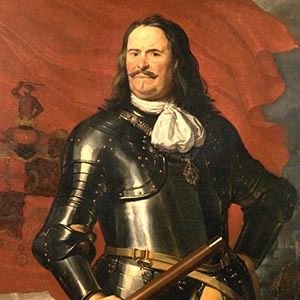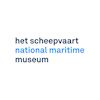
07. Noord 0, Republic at Sea: Michiel de Ruyter
This is a portrait of the most famous Dutch admiral of the seventeenth century, Michiel de Ruyter. He is shown here as the supreme commander of the Dutch war fleet, the batton in his hand representing his authority. The red flag bears his family crest, and in the bottom right, his flagship De Zeven Provinciën (the Seven Provinces) can be seen in a naval battle. For a trading nation such as the Dutch Republic, it was extremely important to provide military protection for its merchant navy vessels while at sea. Both the merchandise and the trading routes needed to be protected. De Ruyter led the Dutch war fleet at sea for many years. He had a good deal of military success and was both famed and feared far beyond the Republic. The prestigious order of the Knights of St Michael sits proudly on his chest; he received it from the French king for his victories over the English. De Ruyter has been viewed for centuries in the Netherlands as a national hero, someone people like to model themselves on, particularly when times are hard. But nowadays, his hero status is being questioned, for in his capacity as admiral he carried out orders that, in practice, enabled the continuation of the Dutch slave trade in West Africa.


The National Maritime Museum
Het Scheepvaartmuseum (The National Maritime Museum) shows the strong connection between the maritime world and society as a whole, and more specifically the impact of this on the lives of many individuals. The collection of The National Maritime Museum is one of the largest and most notable maritime collections in the world with approximately 400,000 objects, including paintings, models of ships, navigation instruments, and maps of the world. Discover 500 years of Dutch Maritime history as well as its strong links to today’s society and the society of the future.
- Kattenburgerplein 1
- Amsterdam Netherlands
- (020) 52 32 222
- www.hetscheepvaartmuseum.nl
